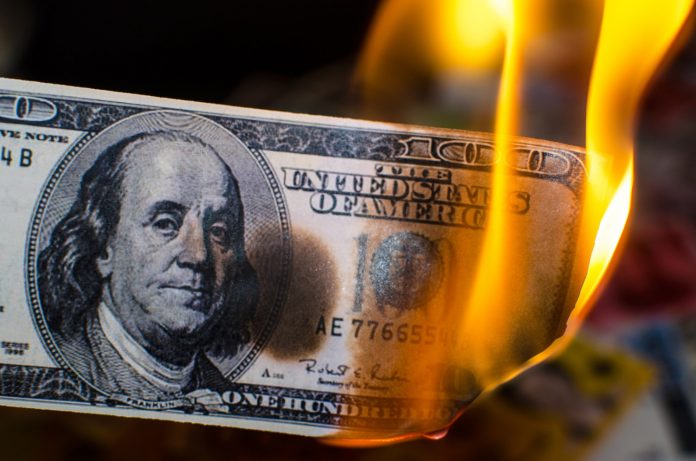The market climbed this morning to finish off another very strong week. This came as the core PCE Deflator, a key inflation measure monitored by the Federal Reserve, registered its lowest level in nearly two years.
The Dow gained 0.7% while the S&P 500 climbed 1.1%. The tech-heavy Nasdaq Composite surged 2% on dipping yields.
The core PCE Deflator slowed from +4.6% to +4.1% YoY in June, slightly below the expected 4.2%. The overall PCE came down to +3.00%, a rate not seen since March 2021.
Services inflation excluding shelter – the Fed’s most closely-watched portion of today’s report – remained at a high level, but was at the lower end of its persistently elevated range. As per the San Francisco Fed’s data, while the cyclical portion of inflation has declined, the acyclical portion remains stubbornly high.
In terms of income, Americans experienced a 0.3% MoM increase, falling short of the anticipated 0.5%. However, spending outstripped income, growing 0.5% MoM, significantly better than the expected 0.1%.
Year-over-year, income and spending growth are converging. After adjustments for inflation, ‘real’ personal spending saw growth for the third consecutive month in June, rising 2.4% YoY.
Consequently, the savings rate dropped to 4.3% of disposable income in June, the lowest level since January.
A potential challenge for the Fed is that wages have been growing for the fourth straight month. Private wages and salaries in June were +5.9%, up from 5.8% and the highest since October 2022. Government worker wages and salaries were +6.4%, up from 5.8% and the highest since October 2021.
This wage growth raises the question of whether it will fuel a further surge in inflation. The data is especially noteworthy in light of the central bank’s recent interest rate hike.
Liz Young, head of investment strategy at SoFi, remarked on the report, stating, “If I paint with a broad brush, it was a good report. It’s moving in the direction that we would want things to.”
But rising economic activity suggests that inflation is set to heat up again, potentially leading to an increase in short-term rates and a deeper yield curve inversion.
The recent softening in key indicators such as the Consumer Price Index (CPI), Producer Price Index (PPI), and, as of today, core CPE, may have given investors a sense of respite. But it might be too early to declare victory on inflation. Several Federal Reserve surveys and PMI reports suggest that inflation may return to center stage in the coming months.
Multiple economic sectors, including services and manufacturing, as indicated in the recent Philadelphia Fed Manufacturing report, expect business activity to accelerate over the next six months. Companies are already succumbing to strike demands and are set to raise wages to secure a stronger workforce. This is likely to further stimulate U.S. consumer confidence, which is at a two-year high, thereby complicating the path of U.S. interest rates.
Given the strong labor market and consumer sentiment, businesses will likely find it easier to pass on price increases. The S&P Global’s preliminary survey for July noted that its output price index has been a leading indicator of CPI. It accurately predicted the easing of U.S. CPI to 3% in June. However, the recent index volatility suggests that reducing CPI below 3% could be challenging as businesses look to pass on higher costs and interest payments to consumers. In particular, the labor-intensive service sector, where inflation is stubborn due to its correlation with wages, has seen steeper-than-average output price increases according to S&P’s report.
Other signs of an inflationary comeback include a more than 10% increase in the Baltic Dry Index, a measure of commodity shipping costs, this week and the highest gasoline prices since October. Purchasing managers are likely to turn these into transportation surcharges, passing further costs onto consumers. Food inflation is also visible with soaring grain prices due to dry weather conditions and geopolitical tensions involving Russia and Ukraine. Insurers are bracing for a potentially inflationary second half of the year, too, as they propose increases for catastrophe, home, and auto premiums.
Let’s not forget, either, that the near 20% surge in U.S. stocks this year has contributed to an inflationary wealth effect, exacerbated by looser financial conditions despite the Fed’s best efforts to tighten.
Federal Reserve Chairman Jerome Powell acknowledged all of the above on Wednesday in his post-FOMC press conference, stating that he does not foresee inflation dropping to 2% before 2025. With demand expected to improve, the path of inflation remains uncertain.
And so, while stocks do seem primed to rally further, the potential for bearish inflation surprises is still a very real threat. When they eventually do emerge, and rate hikes re-enter the conversation, the market could face a tough reality check, likely coinciding with a major correction.








